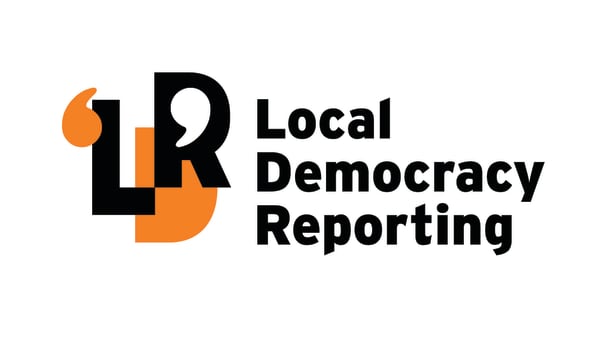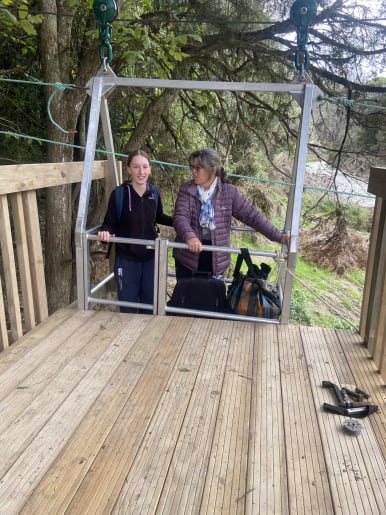A group of frustrated Gisborne residents say they are stuck in “survival mode” after Cyclone Gabrielle destroyed bridge access to farms more than a year ago.
The group is lobbying Parliament to gain extra funding to restore the bridges by their homes and revive the livelihoods of their family farms in Tairāwhiti.
“We fall between policy cracks,” said a spokesperson from Bridging Tairāwhiti, a newly formed Gisborne group which has connected over their lack of connectivity.
Some members of the group recently made headlines due to their creative ways of commuting to work; they each lost access to public roads last year when Cyclone Gabrielle destroyed the council-owned bridges attached to their homes.
One family built a flying fox to transport groceries across the river, and another member travels by horse.
With winter approaching and rivers rising, commuting strategies would become less viable, and with
this in mind, individuals had joined together to campaign for funding, said group facilitators Jan Crawford and Sarah Telford.
The two are not affected by bridge access but facilitated the group as “they saw a need”.
“The families affected don’t have the time to do it themselves, they’re in survival mode,” Telford told Local Democracy Reporting (LDR).
Crawford is a retired environmental mediator and town planner, and Telford is an architect.
Group members Jan Crawford and Jasmine Burgess, the daughter of an affected farming family, submitted a Zoom presentation to Parliament last Wednesday for the Budget Policy Statement, which sets out the Government’s goals.
“The current cyclone support package of $125 million for roading falls short of addressing the extensive damage suffered in Tairāwhiti,” their submission said.
The group presented the submission on the Burgess, Pauariki and Mangatai bridges.
“The three bridges that are attached to the submission will not be replaced for five years, possibly more, because they’re subject to funding,” Crawford said.
The group want a special budget allocation for Tairāwhiti and these bridges.
“Everybody’s got a home, so they’re not red- or yellow-stickered, but they don’t have livelihoods, and their whole way of life has been upended,” she said.
Jasmine Burgess is the daughter of Ian and Helen Burgess, and represents the fifth generation of the family at the Poariki Station farm.
“We are kaitiaki of the land ... there aren’t really any other alternative [roads] for us, and we’ve built businesses and families [on the land]. We can’t run our farms,” she said.
“We have had to walk stock out over other properties, but that hasn’t always worked and has caused delays. We’re losing money and we have been struggling for over a year,” she told the panel.
The family’s ability to employ people had become limited as they could not bring people onto the farm, she said.
Gisborne District Council put in a temporary river crossing to the Burgess property where the public bridge once was, but it could only be used by four-wheel-drive vehicles and only in the summer months, Jasmine Burgess told LDR.
“When we have 20mm of rain further upstream in the catchment, it becomes unusable,” she said.
“My parents are pretty much running the whole thing themselves now,” Burgess told the panel.
She told Parliament the other two cases in their submission suffered similar situations.
“You cannot walk sheep across a river, and so some people have gone out of sheep completely.
“These businesses are vital to Gisborne’s economy. We’re just treading water,” she said.
The group also met with Gisborne Mayor Rehette Stoltz last week.
Stoltz said to LDR, “We welcome all lobbying voices to continue making sure that Government realises and helps with this dire situation.
“It has been a very tough journey for affected families during the past 15 months and my heart goes out to them.
“The emotional as well as financial impacts have been huge.
“From a council point of view, we are doing everything we can within our financial constraints.
“To assist this group, I have met with them, as well as with some affected parties individually.
“Lifelines director Tim Barry has been in contact with all residents that suffer from weather-forced property or personal isolation behind destroyed bridges, and is prioritising responses to them.”
LDR asked the offices of Minister of Transport and Local Government Simeon Brown to comment.
Bridging Tairāwhiti said they would be presenting submissions at the GDC three-year plan hearings next week.
LDR is local body journalism co-funded by RNZ and NZ On Air.











